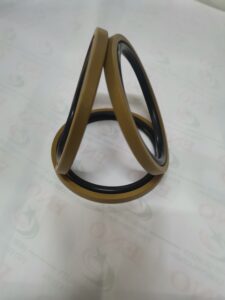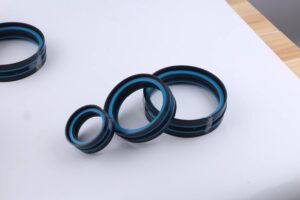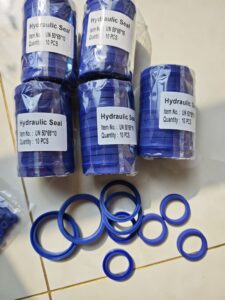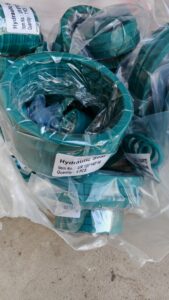Table of Contents
ToggleWhat is the Difference Between Piston Seal and Rod Seal?
Hydraulic and pneumatic cylinders rely on specialized seals to maintain pressure integrity and prevent contamination. Among these, piston seals and rod seals are critical components with distinct roles. This article explores their differences in location, function, design, materials, and operational considerations.




1. Location in the Cylinder
- Piston Seal:
Mounted in a machined groove on the piston head, this seal operates within the cylinder barrel. It separates the high-pressure and low-pressure chambers during piston movement, ensuring fluid does not bypass the piston - Rod Seal:
Positioned in the cylinder head (or gland) where the piston rod exits, it seals the dynamic interface between the reciprocating rod and the housing to prevent fluid leakage and block external contaminants
2. Primary Functions
- Piston Seal:
Maintains the pressure differential across the piston by preventing internal fluid leakage. This enables controlled extension and retraction of the rod, ensuring efficient actuation - Rod Seal:
Acts as a dual-purpose barrier: retaining hydraulic fluid inside the cylinder while excluding dirt, dust, and moisture from entering. It is often paired with a wiper seal to clean the rod surface during retraction
3. Design and Material Differences
Piston Seals
- Profiles:
Common designs include U-cups, O-ring-energized PTFE rings (e.g., Glyd Ring®), and low-friction composite slide rings. These are optimized for bidirectional pressure handling in double-acting cylinders - Materials:
Typically made from wear-resistant materials like PTFE, polyurethane (PU), or polyoxymethylene (POM). These materials balance high-pressure tolerance, fluid compatibility, and durability
Rod Seals
- Profiles:
Often feature lip seals, U-cups, or multi-element designs (e.g., combined sealing lip and O-ring). These accommodate dynamic rod movement and pressure fluctuations - Materials:
Utilize flexible, abrasion-resistant elastomers like fluorocarbon rubber (FKM/Viton®), polyurethane, or PTFE composites. These materials withstand environmental exposure and rod abrasion
4. Operational Stressors
- Piston Seals:
Subjected to high internal pressures (up to several hundred bar) and bidirectional forces. They must resist extrusion and wear under continuous dynamic cycling - Rod Seals:
Exposed to rod surface abrasion, temperature extremes, and contamination. They often integrate buffer seals to cushion pressure spikes and wiper seals to remove debris
5. Failure Impacts
- Piston Seal Failure:
Causes internal leakage, leading to reduced efficiency, slower cylinder movement, or complete loss of pressure. This compromises actuation force and system performance - Rod Seal Failure:
Results in external fluid leakage, environmental contamination, and ingress of abrasive particles. Contaminants accelerate wear on internal components, leading to costly repairs
6. Selection Criteria
When choosing between piston and rod seals, consider:
- Fluid Compatibility: Ensure materials resist degradation from hydraulic oils, water-glycol, or specialty fluids
- Pressure & Temperature Ratings: Select profiles and materials suited to peak operating conditions
- Dynamic Performance: Opt for low-friction designs (e.g., PTFE composites) in high-speed applications to prevent stick-slip
- Contamination Resistance: Pair rod seals with wipers and buffers in harsh environments
Summary
A piston seal is a dynamic sealing element critical for maintaining internal pressure integrity by preventing fluid bypass across the piston. In contrast, a rod seal focuses on external sealing—retaining fluid within the cylinder while blocking contaminants. Their distinct locations, materials, and design priorities ensure reliable performance in hydraulic and pneumatic systems. By understanding these differences, engineers can optimize seal selection for durability, efficiency, and contamination control.



Leave A Comment